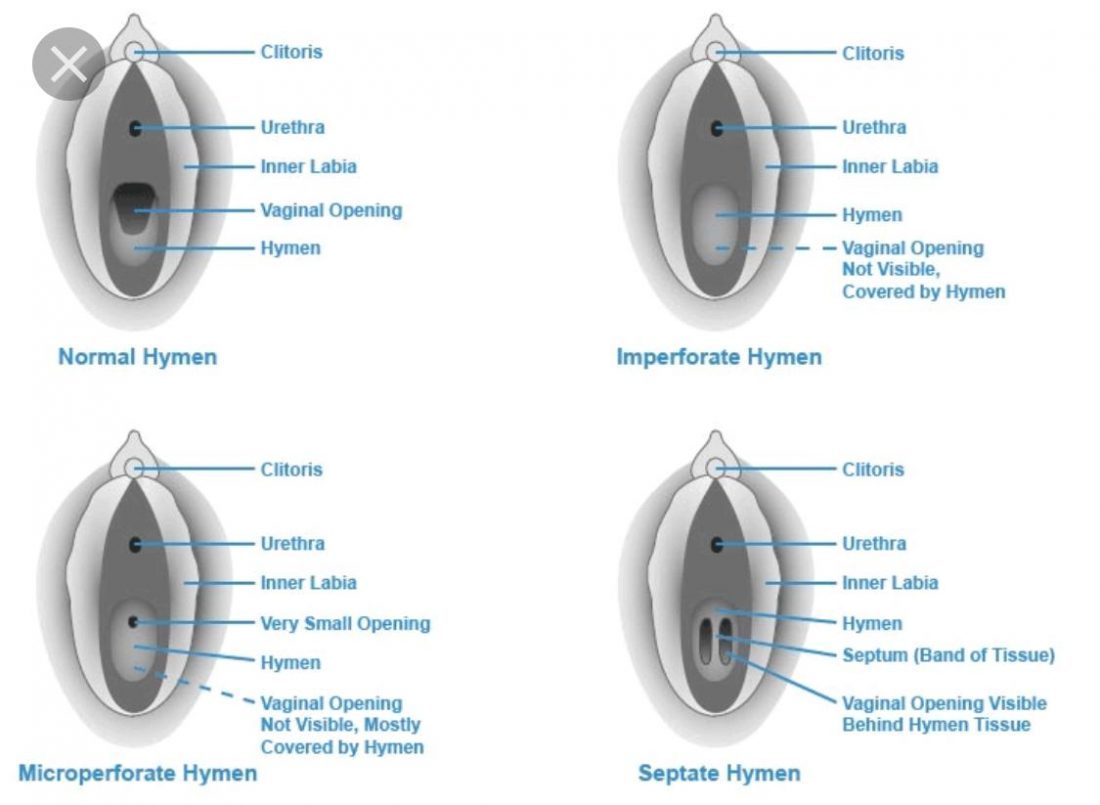
Table of Contents
Hymen- An overview
Women are still far behind regarding getting familiar with their reproductive anatomy. The topic of women’s genitals is still a hush-hush one which should be discussed only behind closed doors. The irony lies in the fact that although the topic is not discussed openly, women are still expected to have an ‘unbroken’ hymen before marriage. But it should be taken into account that each hymen looks and feels different.
Functions of Hymen
The purpose of having a hymen is still a mystery in the medical world. But the gynecologists around the globe believe that the hymen protects the vagina from certain germs and dirt. It serves a protective purpose in infants, children and during puberty by restricting things from being pushed inside the vagina.
Although an ‘intact’ hymen is considered as a sign of purity in several cultures, the concept remains a myth. Having a broken or intact hymen doesn’t change the fact that each hymen varies in shape, size and thickness. Some of the types of hymen are discussed below.
Also Read: Myths and Facts About Virginity and Hymen
Different Types of Hymen

Imperforate Hymen
It is a thin membrane that covers the vaginal opening completely. This is often diagnosed at birth. Most of the time, the diagnosis is made in teen girls. As the hymen is imperforate, this makes the menstrual bleeding very difficult. This backs up the blood into the vagina which further develops into vaginal mass and causes abdominal or back pain. There can be digestive disorders and trouble to urinate. The imperforate hymen can lead to problems such as infections in the vagina, kidney problems, and endometriosis.
Microperforated hymen
Microperforated hymen refers to the thin membrane that closes the opening of the vagina but not completely. Shaped like a half-moon, this makes it difficult for the menstrual blood to flow. There’s only a very small hole in the middle. This type of hymen is present since birth and occurs as the hymen membrane does not develop properly during the gestation period. How to know if you have a micro-perforated hymen? Look out for the following symptoms-
- Periods last longer than usual
- Pain or discomfort while inserting or removing a tampon
- Unable to insert the tampon
- Terrible pain or bleeding when the hymen tears during intercourse
Septate hymen
When you have an extra band of hymenal tissue that is partly blocking the vaginal opening, it is known as septate hymen. The most common problem for women with a septate hymen is the tampon getting stuck due to the string ending up through a small opening and the tampon getting swollen with blood. Women with septate hymens can feel bleeding and pain during intercourse. There are two openings in the hymen- one large and small. It might be difficult to insert tampons or for sexual intercourse through the former and the hymen can break easily during sex through the small one.
Hence, from the above information, it can be inferred that hymen is not a reliable indicator to know if the woman is a virgin or not. Moreover, the type of hymen can lead to restricted menstrual flow filling up of the vagina with menstrual blood which can lead to other problems. The different types of hymen can be reconstructed through the surgical procedure such as hymenoplasty.
Hymenoplasty- Surgical reconstruction of the hymen
It is the procedure of reestablishing the virginity in women by making sure the hymen remains intact. The hymenoplasty is also known as hymen reconstruction, hymen repair, hymenorrhaphy or hymen surgery.
In a hymenoplasty procedure, the surgeon creates a new hymen from tissues of the vaginal lips. Any women willing to regain their virginity can undergo a hymenoplasty surgery. But the gynecologist needs to reconfirm if the hymen can be constructed or not. Looking for hymen reconstruction? Visit our doctors today.
- Why One Should Go For the Hymenoplasty?
- Things You Should Know About Hymenoplasty!








